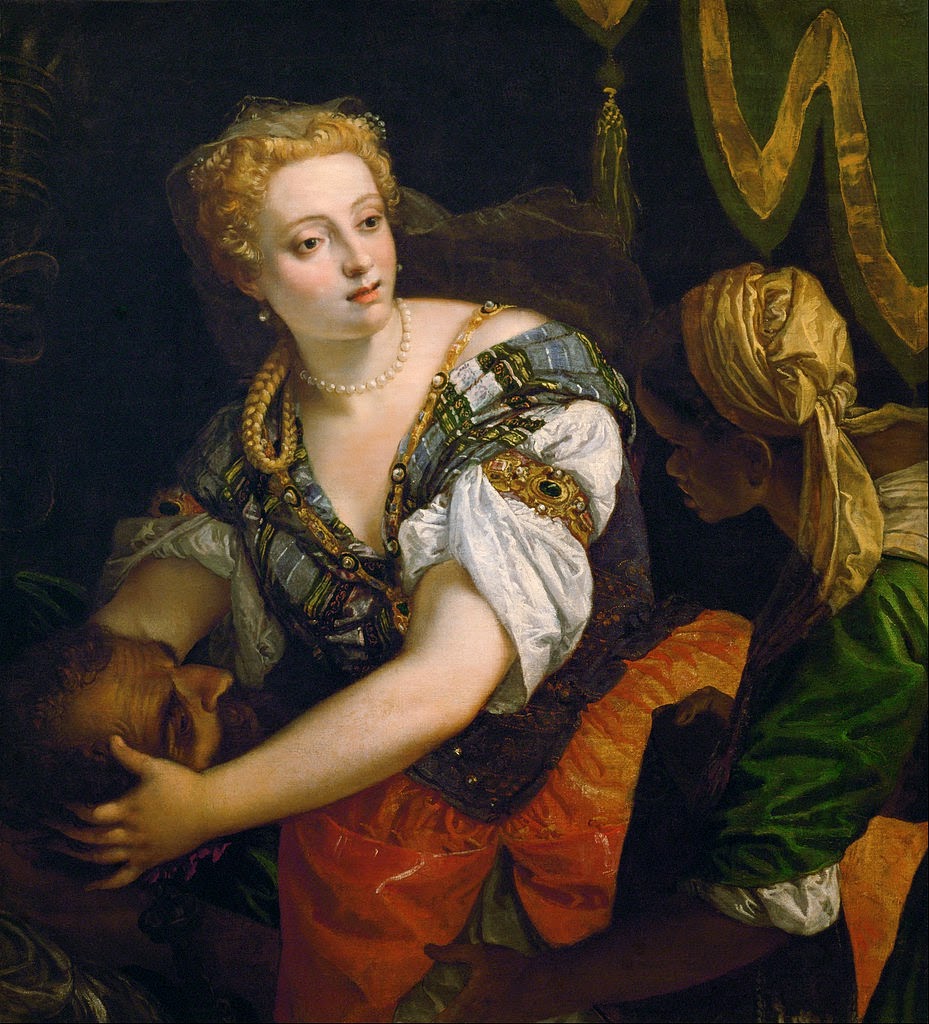The big new VERONESE exhibition at the National Gallery is my opportunity to check out Ruskin's distasteful jokes during the US Civil War - that in his view the main purpose of Negroes was to be painted by Veronese, and his unamusing request that Charles Eliot Norton send him 'something American - a slave perhaps. I've a great notion of a black boy in a green jacket and purple cap in Paul Veronese's manner.'
Those who admired Ruskin's tremendous description of Turner's 1840 picture Slavers Throwing overboard the Dead and Dying—Typhoon coming on : as 'the noblest sea that Turner has ever painted':
"It is a sunset on the Atlantic after prolonged storm; but the storm is partially lulled, and the torn and streaming rain-clouds are moving in scarlet lines to lose themselves in the hollow of the night. The whole surface of sea included in the picture is divided into two ridges of enormous swell, not high, nor local, but a low, broad heaving of the whole ocean, like the lifting of its bosom by deep-drawn breath after the torture of the storm. Between these two ridges, the fire of the sunset falls along the trough of the sea, dyeing it with an awful but glorious light, the intense and lurid splendor which burns like gold and bathes like blood. Along this fiery path and valley, the tossing waves by which the swell of the sea is restlessly divided, lift themselves in dark, indefinite, fantastic forms, each casting a faint and ghastly shadow behind it along the illumined foam. They do not rise everywhere, but three or four together in wild groups, fitfully and furiously, as the under strength of the swell compels or permits them; leaving between them treacherous spaces of level and whirling water, now lighted with green and lamp-like fire, now flashing back the gold of the declining sun, now fearfully dyed from above with the indistinguishable images of the burning clouds, which fall upon them in flakes of crimson and scarlet, and give to the reckless waves the added motion of their own fiery flying."
certainly expected him to be an Abolitionist. Far from it; perhaps influenced by his own admiration for Thomas Carlyle and certainly by his political conservatism, Ruskin did not oppose slavery, and indeed at the height of the US Civil War stopped writing to his old friend Norton, an active Emancipation campaigner.
Lest Veronese be co-opted into this argument, it should be said that Ruskin's remarks followed his aesthetic conversion away from the pious calvinism of his upbringing to a warmer valorisation of physicality thanks to "the mighty Paul Veronese, in whose soul there is a strength as of the snowy mountains, and within whose brain all the pomp and majesty of humanity floats in a marshalled glory, capricious and serene like clouds at sunset - this man whose finger is as fire and whose eye is like the morning..."
So what of the black boys in green jackets and purple caps? In the fifty works in the NG exhibition, there are indeed quite a few figures of unmistakeably African ancestry, though some are not immediately discernible and nearly all are marginal onlookers or servants, whose colouring may have been their chief pictorial purpose. The exceptions are naturally the third king in the Adoration of the Magi, his appropriately Ethiopian attendant,
 and the equally appropriate local young man who has found Moses' cradle in the Nile and handed him over to the apparently European daughter of Pharoah, as in this detail from the version from the Prado : -
and the equally appropriate local young man who has found Moses' cradle in the Nile and handed him over to the apparently European daughter of Pharoah, as in this detail from the version from the Prado : -The Martrydom of St George - lower half only here - has a lad in green acting in support of George's executioner, though he could conceivably be trying to restrain him.

I didn't see any black boys in purple caps (Ruskin must have had other paintings in mind) but I am also interested to note the ethnicity of Judith's maidservant and accomplice in Veronese's account of the decapitation of Holofernes, as at the top of this post. She is also clad in green. Veronese was living and painting in Venice in the 1570s and 80s when these pictures were produced; so one assumes that black servants were common figures in the city, available to fill pictorial roles along with nobles, merchants and courtesans.
The same cannot have been true of other characters who jostle and gesture in these busy, vigorous scenes - namely the many angels and cupids who act their allegorical roles so convincingly, rising and floating and swooping with airborne realism, here lifting a saint to heaven, there dropping an episcopal hat on St Nicholas, even carrying a plump putto in the crook of an arm.
The pictures are confidently tremendous, as is their staging in the large top-lit galleries with grey or maroon walls. Nearly all are large and designed to be viewed from the floor at a distance, so in the spacious rooms one can stand back and look, as at a cinema screen, taking in the composition wholly and severally, in a very comfortable viewing experience. When desired, closer brushwork scrutiny is equally not impeded by a queue of other viewers. And there are many other topics to ponder besides servants and angels. Check out the animals, too.




